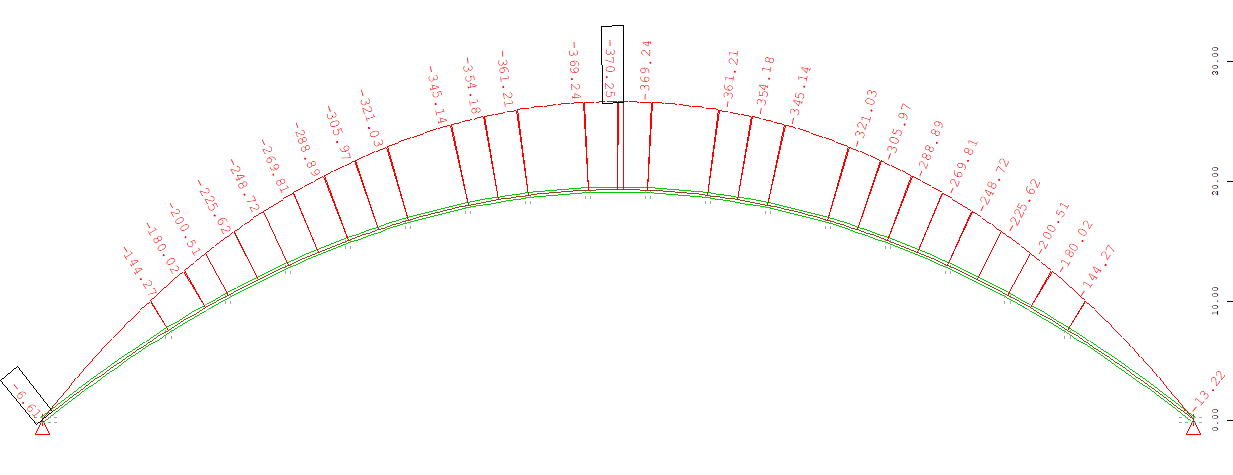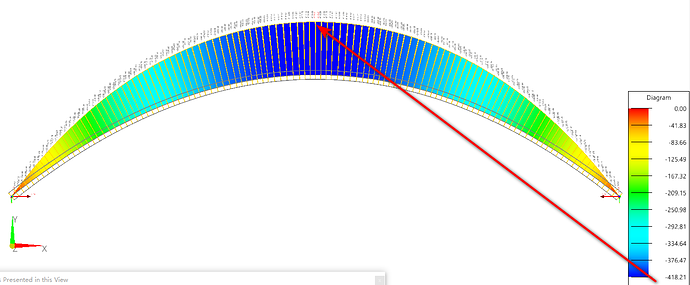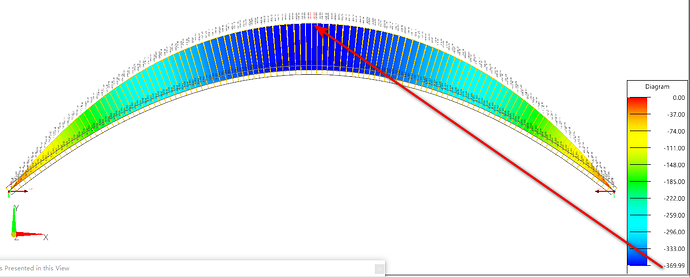For composite section, such as steel and concrete section, the steel material is genrally used as the “main” material for composite section, while the concrete is used as “secondary” material.
Under temerature loading, different Alpha values should be used for steel and concrete materials, such as 1.2E-5 for steel and 1.0E-5 for concrete.
In Sofistik 2023-5, a universal Alpha value, 1.2E-5 is used for both steel and concrete under uniform temperature loading, even if I explcitly apply “ALPH 1.0E-5” on the concrete.
This is incorrect.
But under nonlinear temperature loading, I can apply different Alpha values, such as 1.2E-5 for steel and 1.0E-5 for concrete, which is correct.
Below is an example:
If applying 10 degree uniform load on the arch in Sofistik
| LC | NO | TYPE | TITL | ||
|---|---|---|---|---|---|
| 6 | TU | 整体升温 | |||
| LINE | REF | NO | TYPE | P1 | |
| BGRP | (11 61 1) | DT | 10 |
This is the moment diagram of the arch
If applying 10 degree uniform load by “Nonlinear temperature load”
| LET#T | 10 | 10 | 10 | ||
|---|---|---|---|---|---|
| LET#Z | ‘T1’ | ‘T2’ | ‘T3’ | ||
| LOOP#i | T | ||||
| BEAM | FROM | TO | TYPE | PA | REFT |
| ‘GRP’ | 1 | T | #T(#i) | #Z(#i) | |
| ENDLOOP | |||||
| EVAL | TYPE | TEIG |
I also use RM Bridge (TDV) as comparison
-
Set alpha = 1.2E-5 for concrete, the result is the same as that in Uniform temperature load in Sofistik, which means in Sofistik Uniform temperature Load DT, Sofistik set concrete alpha value the same as that for steel, which is incorrect.

-
Set alpha = 1.0E-5, the result is the same as that in Uniform load (by using Nonlinear temperature load) in Sofistik, which means in Sofistik Nonlinear temperature load, Sofistik use the correct alpha value for concrete.




